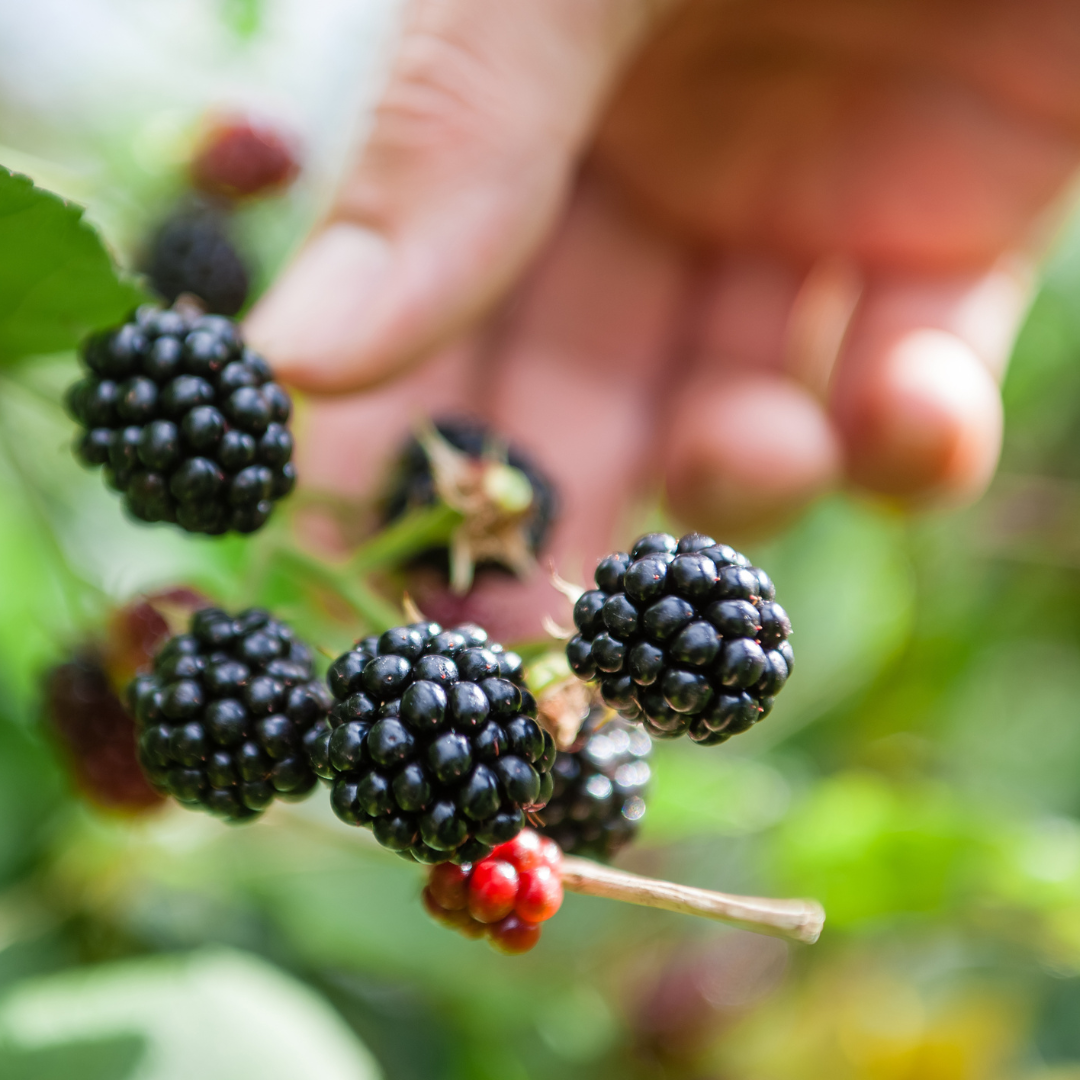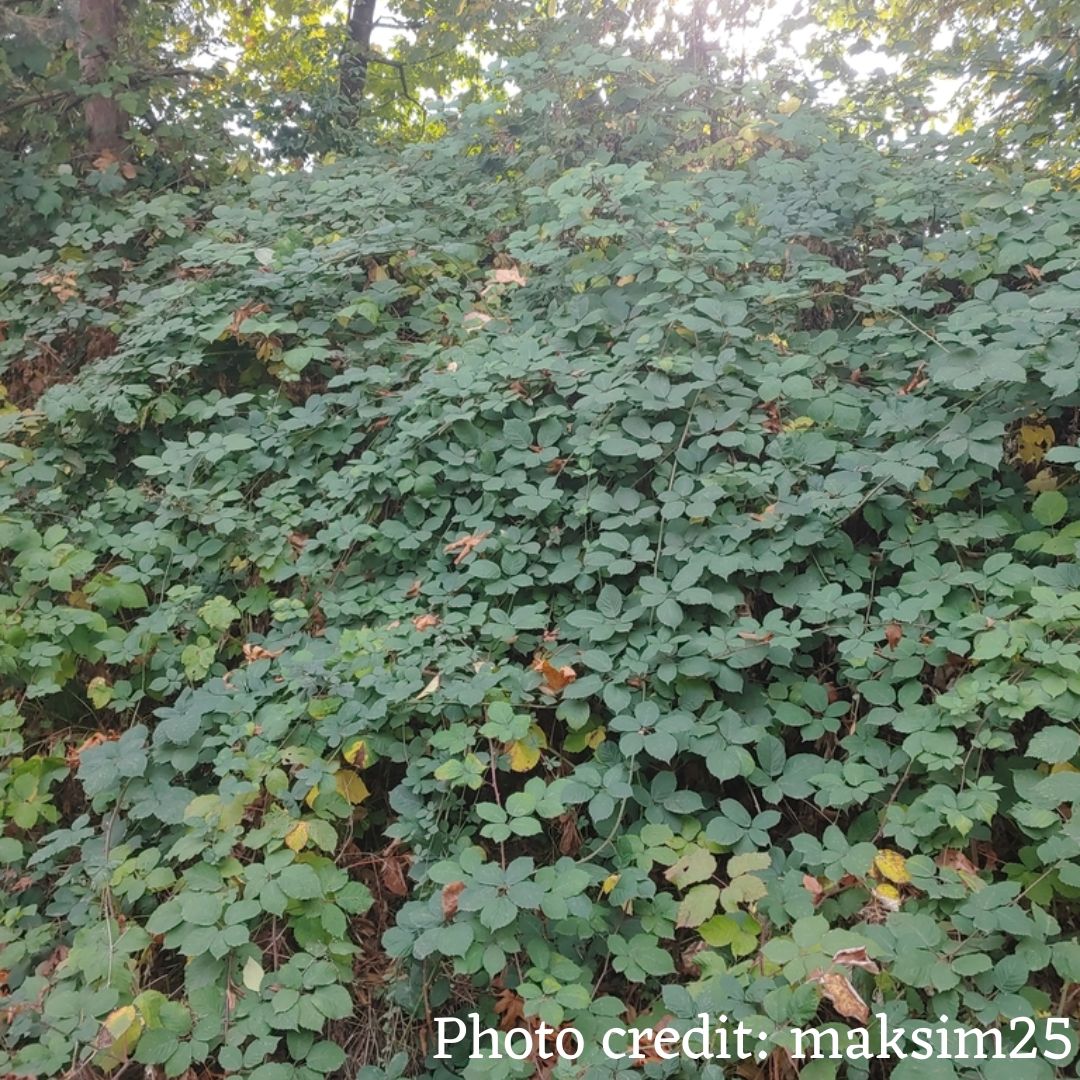
Foraging for wild berries is not just a treasure hunt with super tasty rewards, it can also be a way to connect with your local environment. However, seasoned foragers emphasize the importance of learning about how different berries fit into our native ecology before venturing out, bucket in hand. That’s why we’re here to teach you about which of our tasty local berries are native and which are invasive.
All of the berries in this post are aggregate drupelets, made of many bits put together into one group rather than a single berry, like a blueberry. There are no toxic aggregate berries in British Columbia; you can be quite certain when foraging for these fruits.

Good Foraging Practices
The most important rule to follow when foraging any wild plant species for consumption is to be absolutely positive about the identification of the plant. It should go without saying that this is a very basic identification guide, and further research may be required.
Another important rule is to be familiar with the environment from which you are foraging.
- Be sure that the area has not been sprayed with chemicals.
- Do not eat plants from areas that frequently flood: floodwaters can bring harmful chemicals and bacteria that can be soaked up through the plant.
- Forage berries from the waist up (unless you know for sure that there have been no canine friends around).
- Do not forage plants on private property or protected land.
- Avoid areas right next to busy roads, as plants can absorb harmful fumes.
We can eat our share, but it’s important to remember that local wildlife is dependent on these food sources.
- Never pick a native plant bare of fruit.
- Avoid returning to the same source at too-frequent intervals.
In this section:
Invasive Berries
Invasive edible berries can have serious negative environmental, social and economic impacts but they’re delicious, so why not treat yourself? While foraging edible invasive berries may not reduce their seed spread enough to help control the population, eating your fill won’t hurt, either.
Below are some berry delicious invasive plants that have become established in the Sea to Sky region.
Himalayan Blackberry (Rubus armeniacus)
Identification:
Himalayan Blackberry is a common invasive in the southern part of the Sea to Sky region and grows very large. Some of its identification traits are:
- Edible berries, which ripen from mid-summer to fall, are black, shiny, and hairless aggregate fruits.
- White to pink 5-petaled flowers are grouped in clusters of 5 to 20.
- Egg-shaped leaflets have toothed edges and are grouped in clusters of 3 – 5, and are grey and wooly underneath.
- Stiff canes are thick with sharp, curved prickles that can be green or red and 6 – 10mm long.
Learn more about blackberry foraging in this post.
Impact:
- Outcompetes native vegetation and reduces local biodiversity.
- Infests stream channels and banks, restricting wildlife & human access to water and increasing erosion.
- Reduces available wildlife habitat.
Cutleaf Evergreen Blackberry (Rubus laciniatus)
Identification:
Cutleaf Evergreen Blackberry is also present in the Sea to Sky, but is not as common as Himalayan Blackberry and doesn’t grow nearly as large.
. Some of its identification traits are:
- Edible berries, which ripen in mid-late summer, are black and shiny.
- Flowers are 5-petaled and white to dark pink, occurring in clusters of 5 – 20.
- Distinct leaves that are deeply divided and lobed with toothed margins and hairy undersides. Leaves occur in groups of 5.
- Angled stems with hooked prickles that have a red base and yellow tip.
Learn more about blackberry foraging in this post.
Impact:
- Outcompetes native vegetation and prevents the establishment of native trees.
- Decreases biodiversity.
- Infests stream channels and banks, which restricts wildlife & human access to water and increases erosion.

The Harm of Invasive Berries
Highlighting invasive species as tasty and delicious is a double-edged sword. It is important not to minimize the detrimental effect that these species can have on our ecosystem. As noted above, these invasive species have negative ecological, social, and economic impacts.
Unfortunately, eating invasive plant species into submission one meal at a time is an unrealistic goal. It will take a much more aggressive hands-on approach to put a dent in these invasive populations. In the meantime, serving a blackberry pie for dessert could at least be a great way to engage and educate your dinner guests.
In this section:
Native Berries
The Sea to Sky region is plentiful with native edible berries. However, be careful not to over-pick from these plants, as native wildlife rely on them for food, and we want them to spread their seeds and continue to grow. Below are some common berry-bearing plants that will make the forager in you happy.
Trailing Blackberry (Rubus ursinus)
Identification:
Trailing Blackberry is the only species of Blackberry native to British Columbia. This species is much smaller than Himalayan or Cutleaf Evergreen Blackberries, and mostly trails along the ground. Some of its identification traits are:
- Edible berries, which ripen from early August up until early October, are black, shiny, and fairly small, with an elongated shape. The berries taste extra sweet (like jam on a vine!)
- White flowers are 5-petaled and occur in small, flat-topped clusters.
- Alternate, sharply-toothed narrow egg-shaped leaflets occur in groups of 3.
- Greyish vines trail along the ground with tiny, hooked prickles.
Learn more about blackberry foraging in this post.
Benefits:
- Provides excellent wildlife habitat.
- Many species of birds, small mammals, and bears rely on these berries for food.
Salmonberry (Rubus spectabilis)
Identification:
Salmonberry is an upright shrub that grows 1 – 3m tall, and forms thickets. Some of its identification traits are:
- The edible berries, which ripen in May and June, look like salmon-coloured raspberries. The berries taste mildly sweet and somewhat tart.
- Bright pink 5-petaled flowers occur in groups of one or two.
- Stems are very woody and less prickly than most other Rubus species. The bristles are short and straight, and the bark peels away from the stems easily.
- Dark green leaves alternate along the stem and are composed of three sharply-toothed leaflets. When the top leaf of the three is removed, the cluster resembles a butterfly.
Benefits:
- Dense thickets provide secure cover for small animals.
- Aids in bank stabilization and prevents erosion.
- Source of food for birds, small mammals, deer and bears, and other large mammals.
- One of the earliest sources of nectar for pollinators.
Thimbleberry (Rubus parviflorus)
Identification:
Thimbleberry produces delicious, seed-filled berries that ripen in late summer. Some of its identification traits are:
- Red, dome-shaped berries ripen in late June through August. The berries are similar to raspberries and are very soft when ripe.
- White, 5-petaled flowers are clustered in flat-topped groups of 2-10.
- Fuzzy leaves are broad and somewhat maple leaf-shaped with 3 to 7 pointed lobes.
- Thornless, woody stems with grey flaky bark grow 1 – 2.5m tall.
Benefits:
- Thickets provide secure cover for small animals.
- Plays an important role in nutrient cycling.
- Aids in soil stabilization.
- Useful for revegetation of exposed sediments and to reduce increased growth of invasive species.
- Source of food for birds, small mammals, deer and bears, and other large mammals.
The Benefits of Native Berries
Native plants are important for supporting the needs of local wildlife populations. While all plants can provide shelter, and fruit-bearing plants can provide some food, native plants offer the greatest benefits because they allow for a greater variety of vegetation to co-exist. This ultimately increases biodiversity and habitat heterogeneity. In particular, native plants support a wide variety of insects that provide an essential source of protein for many other animals.
Additionally, there are species of wildlife that are completely dependent on specific native plants to survive. Local wildlife may have a special ecological relationship with the native vegetation. When that native plant disappears, the wildlife it supports may disappear as well.






















Add Comment